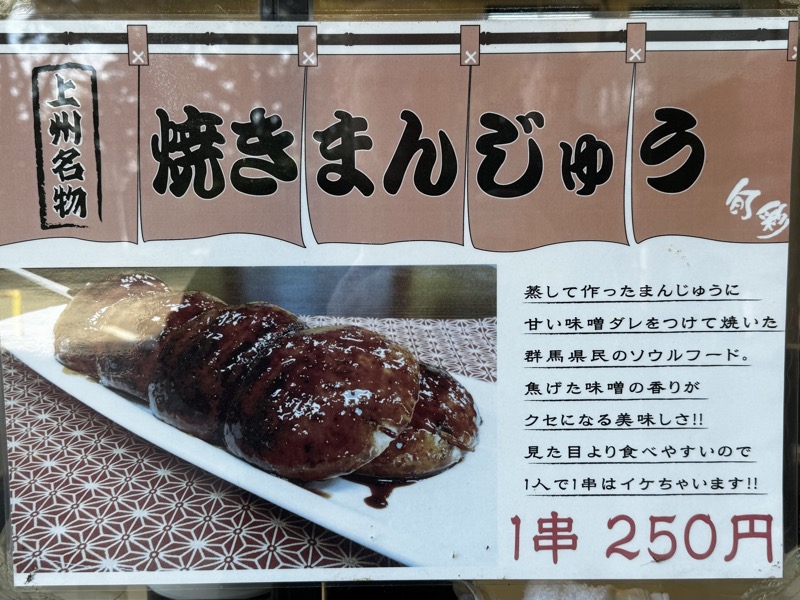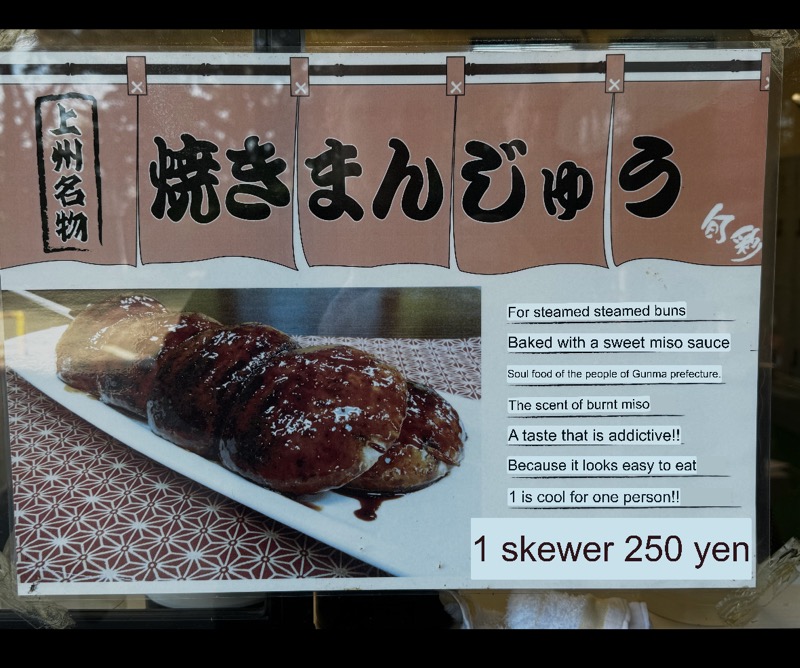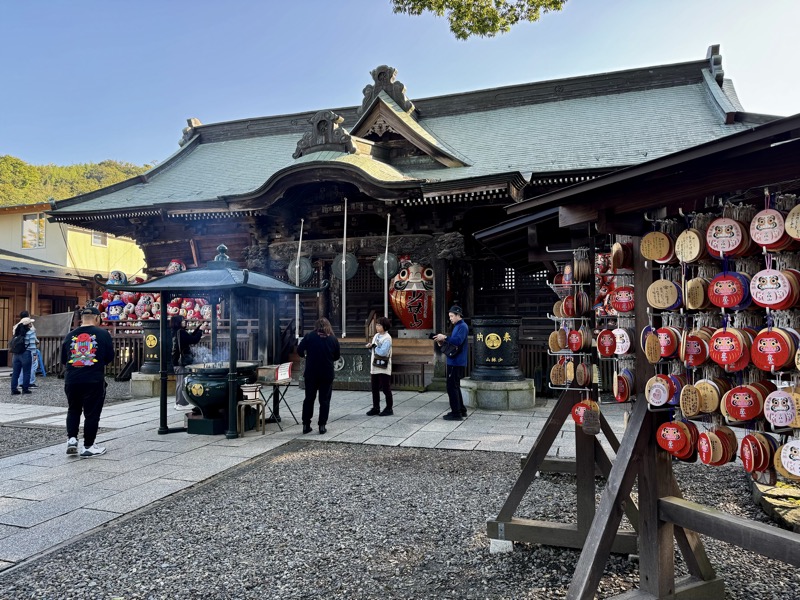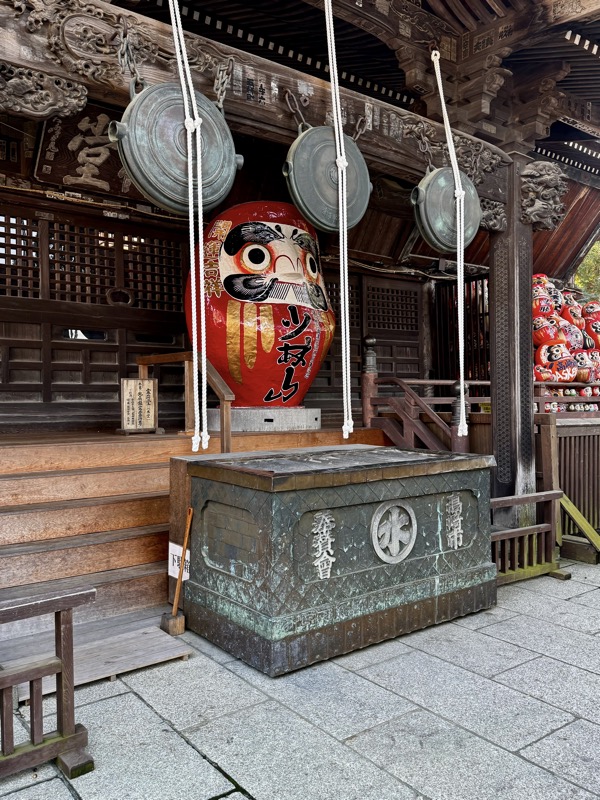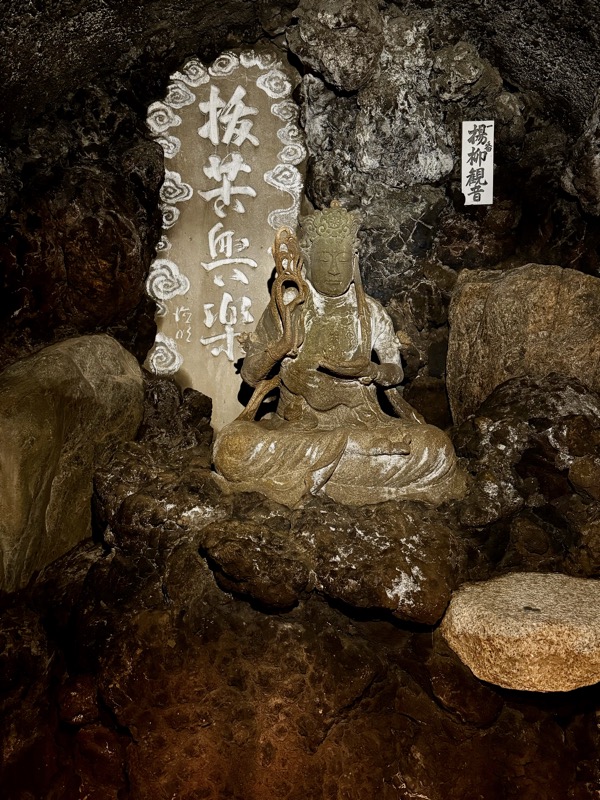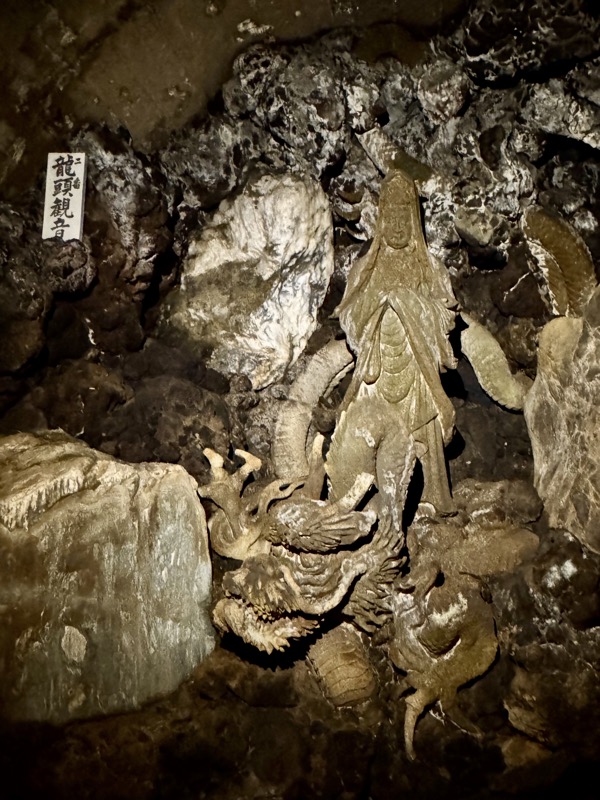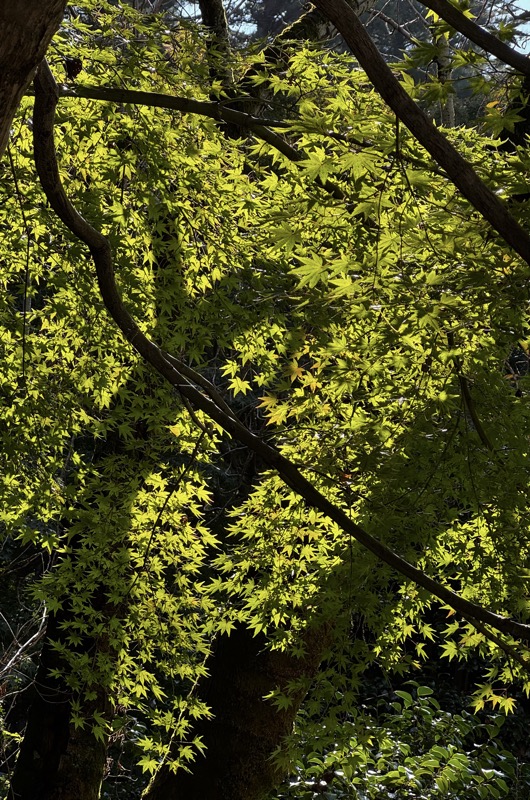En route to Minakami, we did some work and then some shopping… snacks, drinks, fabric; you know, the essentials. Lunch time hit and Mr K wanted to find a sushi train. Something to do with us heading towards mountain towns and the high likelihood of there being a decided lack of sushi and seafood on menus, I think he was taking pity on me as he knows how much I love seafood in Japan. We found Hamazushi, which we think is another conveyor belt sushi restaurant chain? Not entirely sure but it was so similar to the last one we visited, odds seem high.



Ordered a ‘Melon Float’ (beause, Japan!), sadly not quite the winner the amazake was at the last place as it was waaaay too sweet.







None of it healthy. Most of it very tasty. Lunch for two for approximately AUD$12 each… can’t complain. Even ordinary sushi train here is better than good sushi train nearly everywhere else in the world.
On the way to Minakami, we stopped at a Tea Cup – I should clarify this a bit: that we call them Tea Cups stops, most other people would probably call them Roadside Service Centres. If you are road tripping, the Tea Cups are essential, because service stations where you buy fuel do NOT always (in fact, do not usually) have bathrooms for public use! The Tea Cups is what they are signed as on the side of the road. The centres are basically large roadside stops with clean bathroom facilities, restaurants where you can get a proper meal – there’s no deep fried fucking Chico Rolls here, baby! – loads of vending machines, as well as local snacks and produce, souvenirs and gifts all sorts of cool stuff. Nearly every one of these places seems to either have its own mascot or has heavily adopted the mascot of the local area. I do not know why – but we no complain. They’re so cute!


And the local mascot will be on everything! This little pig is super cute but kinda cranky-looking, but stuffed if I can figure out what / where he is the mascot for???

Honey seems to be big on the local produce scene here…


We’ve also fallen in love (all over again) with Japanese roadworks… they have the coolest signage and visual warnings to show that there will be delays ahead. I am certain if I could read the signage, it’s probably extremely apologetic about any impending delays. I haven’t managed to get a picture of the guy of the bowing guy that thanks you at the end of the roadworks, but I will continue to try!

We love the little inflatable dudes… they look different in every prefecture.

The little Gunma-chan is the main mascot for this entire prefecture – and he turns up in the most unlikely of places… on road furniture, on saké cups, on pickles!


So, next stop was one of those ‘Insta-famous’ places… I saw it as a recommended stop on a Reel on FB, and added it to my list of things that were en route to places I knew we were going. Jack the Tart Fantasty. No idea who named this place, but Hokkaido cheese tarts in Minakami in the middle of Gunma? Why not, I say! To be honest, I just thought their aesthetic was cool, and wanted to check it out, but taking Mr K here was probably not my best laid plan – because he really likes the sweet stuff!



Weirdest little place ever! We are in the middle of like a tiny town, smaller and as remote as say, Cooyah, and there is a tour bus here visiting a tart shop! They have jazz music playing softly in the background and a LARGE cafe out the back for visitors to have a coffee and a tart. I have no idea what the jazz, old books, and a manual typewriter have to do with Hokkaido cheese tarts in the middle of a Japanease mountain prefecture like Gunma?! But here they are!

I was right, letting Mr K decide what to buy was complete folly – I wanted one cheese tart, he bought seven! Two plain cheese tarts, and one each strawberry, royal tea, matcha, chocolate and pumpkin!

They also sold these little containers of fudge/cookie slice pieces? I don’t know what these are exactly, but they had little samples out and it tasted like pure sugar so I left it well alone.

The most Japanese thing in the weird little cheese tart fantasty house was the Daruma – but he has no eyes yet! Not even one. :’( #SadDaruma

I have no idea how we are going to eat seven cheese tarts… when all our breakfasts and dinners are included in our accomodation in Minakami.

This was about enough for me! Though I did force myself to enjoy most of the strawberry one. Japanese strawberry things actually tasting like real strawberries and all, so it felt like a struggle worth doing.

Random photo of strange brutalist hotel for Angus… because bitches love brutalist architecture. In rural Japan. Confusing (and ugly) AF.

We found our ryokan without any trouble… all that is somewhere else.
After some stupid early work meetings, we made some time to go tootling around the mountains here to check out some of the other towns. So we took up a drive to Takaragawa Onsen.

It was nice to see some colour creeping into the mountains – though they should be bright red and orange by now in a usual season.





I’m still a bit disappointed at the lack of autumn foliage, it’s mid-November and everything should be deep red by now. Fuck climate change and fuck oil and coal executives with their bought and paid for politicians even more. 




Still, even with the limited red and orange leaves, the drive into Takaragawa was really pretty.









Takaragawa is a very popular onsen town, and has been consistently rated as one of the best in Japan. It’s an interesting layout in the town – there are ryokan buildings on either side of the river and they all access large public onsens together rather than maintaining their own individual public onsens. Most of the baths are konyuku (mixed gender bathing) where ladies hire a bathing costume and men hide their goolies with their onsen towel. But there are also segregated bathing areas as well.
Now this whole place is ‘discreetly tattoos allowed’. As in, if you are one of the overnight guests staying in the ryokans, the tattooed can get away with using the onsens early in the morning or late in the evenings, or you might be encouraged to cover your tattoos with bandages… but generally, they still do not want tattooed people using the day facilities where the baths are busiest. This is partly why we chose nearby Minakami for a ryokan with a private bathing facility.
No photography allowed here, so here’s some pics blatantly stolen off the internet of the outdoor baths and they look amazing.




Takaragawa is really well known for its autumn magic landscapes.

Following the Tone River …






Minakami is a quaint little town with a small shopping strip near the train station – think about one tenth of the size of Hakone. We did find this quaint little glass art studio which had some beautiful but very chunky glass jewellery on display – it’s not really the sort of thing I wear, but I can appreciate how beautiful it is, and the artistry and skill that goes into making these gorgeous objects.







Seriyu Park on the Tone River has a cool little footbath where you can rest and enjoy the views of the river… which would have been cool, but there was an excavator about 300m away that seemed to be moving/crushing river stones (?) making a helluva racket! So maybe not so relaxing after all.




Also nearby on the riverside was a ‘relaxation zone’ which we initially thought was putt-putt, but then got closer and it looked to have a skate bowl, but got closer and realised it was just a strange arrangement of rocks and things for you to wander through with no seemingly obvious recreational purpose? Maybe it’s the start of a new garden of some sort? It’s a mystery… who knows!

Now, I wish I had taken a photo of the sign explaining this… this lovely riverside park which is where you come to get out of the city and enjoy the nature had been taken over with ‘glass crystal sculptures’ to ‘dazzle and delight’. It was a temporary installation that is over now and looks to have been associated with night time illuminations and possibly fireworks by the river! No particular reason for it seemed evident – like it doesn’t appear to be an annual festival or something??? And, sadly, we missed the night shows by about three days.

I’m easing into it here…

With the polite and not overly strange sculptures…


Then there was this enormous 6-7m diameter monstrosity of glass, driftwood and crystal, mirror balls and ???





So much glass, so much crystal Barbie shiny, so much mirror ball!

Enquiring minds need to know, “Why?”..!

Truly bizarre… and wouldn’t it be some sort of fire hazard?

And all by the peaceful river…


After the excitement and confusion of the Crystal Barbie Park, as it will henceforth be known to us forevermore… we went to the little town, picked up some local beer, saké and retreated to our ryokan to go back to work!
























































































































































 We also thought the sign out front which shows two horse-police people wearing masks, was really typically Japanese cute! Joshu-kan and Miyama-chan are the police mascots here. I can’t decide if their names are some sort of piss take? Joshu and Miyama are both fairly famous types of beef!
We also thought the sign out front which shows two horse-police people wearing masks, was really typically Japanese cute! Joshu-kan and Miyama-chan are the police mascots here. I can’t decide if their names are some sort of piss take? Joshu and Miyama are both fairly famous types of beef! 




























































 Ikaho… I’ll definitely be back.
Ikaho… I’ll definitely be back.


























